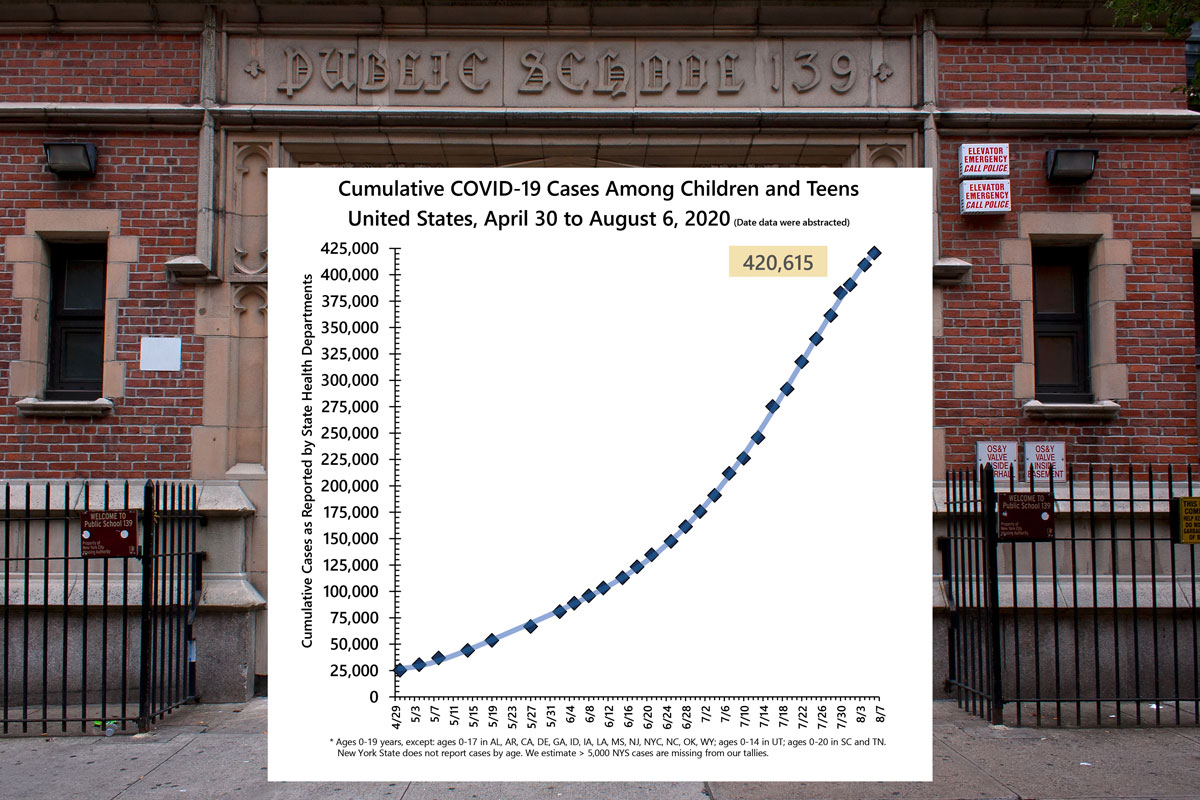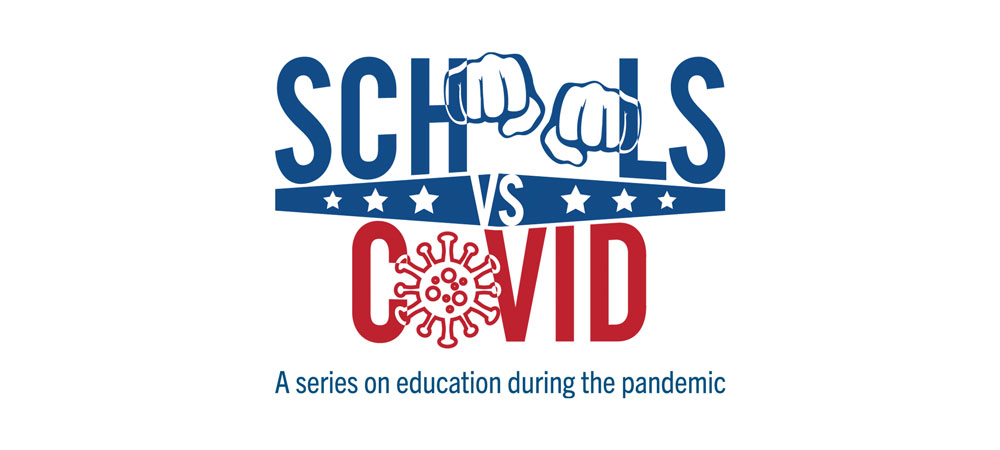How hard is it right now to be a school leader weighing options for the fall?
On the one hand, the President of the United States is strenuously urging schools to open, and many parents are struggling to balance jobs with caring for children at home. Schools also provide critically important services, including nutrition and health care, for many students. And educators, parents, psychologists and others are concerned about the toll that being out of school is taking on children.
On the other hand, since the beginning of July:
- COVID infection rates have risen in 39 states and declined in only two.
- Teachers unions across the nation have threatened strikes if schools cannot guarantee safe ventilation and enforcement of social distancing and the wearing of masks.
- A poll in mid-July found that 71 percent of parents consider sending their children back to school in the fall a “large to moderate risk” — including nine in 10 African Americans.
- According to the Coronavirus in Kids (COVKID) Tracking and Education Project, on April 30th, the number of COVID cases among U.S. children and teens stood at under 30,000. As of August 4th, the total was 409,358. There had been 97 deaths in that age-group and 1,011 admissions to intensive care units.
- In a nation of roughly 74 million children, those numbers may seem relatively low, but a recent outbreak at a children’s overnight camp in Georgia provided clear confirmation of what health officials already knew: that young children carry, can get sick from, and — most dangerously — can transmit the coronavirus. “These findings demonstrate that SARS-CoV-2 spread efficiently in a youth-centric overnight setting, resulting in high attack rates among persons in all age groups, despite efforts by camp officials to implement most recommended strategies to prevent transmission,” the CDC report said.
- That report, in turn, underscored a study published in July in JAMA which estimated that closing schools in March reduced the rate of new COVID-19 cases by 66 percent. The report asserted that because of the school closings, about 1.4 million fewer people became ill and about 40,600 fewer people died during the 26- and 16-day periods studied.
- New York’s Governor and New York City’s Mayor issued different guidance on reopening. Governor Andrew Cuomo said that schools should reopen if the rates of infection are below 5 percent. Mayor Bill De Blasio said the threshold for reopening should be an infection rate below 3 percent.
- As of August 7th, 13 of the nation's 15 largest school districts had opted to begin the school year with online learning only. Chicago, which had planned to follow a hybrid model, reversed course in the midst of rising infection rates. Hawaii has opted for a hybrid approach, but pushed back its starting date by three weeks. On August 7th, Governor Cuomo announced that New York City schools could physically reopen if infection rates in their districts were below the 5 percent threshold.
- The New York Times is running an ongoing series about the United States’ failed response to the pandemic, and experts are calling for a complete re-thinking of COVID testing strategies in the United States.
- France, Germany and other European nations were seeing sharp rises in infection rates and bracing for a second wave in the fall.
- President Trump repeated his contention that children are “almost immune” and that the virus will simply “go away.”
In this environment, with the burden of making life-or-death decisions on their shoulders, school leaders must often come to grips with the scariest fact of all: there simply may be no right answers — or those answers may change from minute to minute.
In “dispatches” from the field [click on the names below or in the callout box in the margin], three Teachers College alumni — Thomas Rogers, Superintendent of Schools in Syosset New York; Lorna Lewis, Superintendent of the Malverne Union Free School District in Malverne, New York and Elizabeth Bonesteel, Superintendent of the Montpelier-Roxbury Public Schools in Vermont — along with Brett Schneider, Principal of the Bronx Collaborative High School in New York City, and a current Teachers College Cahn Fellow; share what it’s like to be grappling with what what Ellie Drago-Severson, Professor of Education in TC’s Education Leadership program, calls the “ultimate adaptive challenge.”
[Read a piece recently published in The Atlantic by Sarah Cohodes, Associate Professor of Economics & Education, proposing a back-to-school strategy. Some issues have since been settled, but many questions remain open.]

